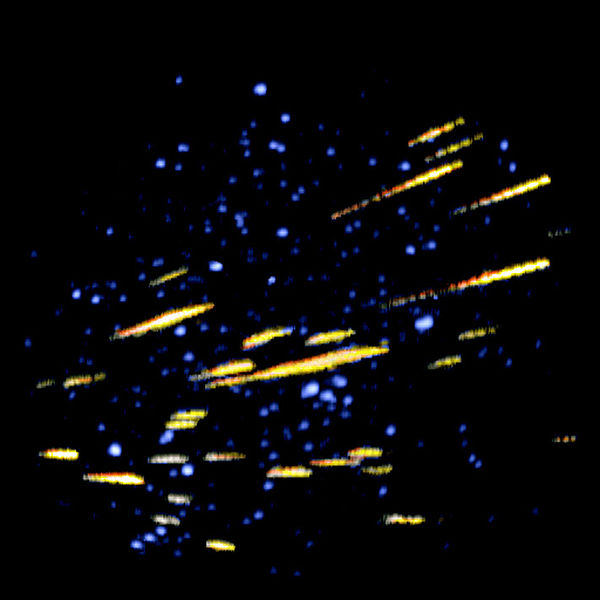
No higher resolution available.

|
This image was uploaded to the shared "Image Pool" and is usable on any CreationWiki site.
Please go to the Pool to edit its description.
|
Summary
Description
English: This picture is of the Alpha-Monocerotid meteor outburst in 1995. The Perseid meteor shower, usually the richest meteor shower of the year, peaks in August. Over the course of an hour, a person watching a clear sky from a dark location might see as many as 50-100 meteors. Meteors are actually pieces of rock that have broken off a comet and continue to orbit the Sun. The Earth travels through the comet debris in its orbit. As the small pieces enter the Earth's atmosphere, friction causes them to burn up.
Date 1995
Source http://solarsystem.nasa.gov/multimedia/display.cfm?IM_ID=843
Author NASA Ames Research Center/S. Molau and P. Jenniskens
Permission
(Reusing this file)
Images of NASA are within the public domain if not specifically noted otherwise
Copyright status:
This file is in the public domain because it was solely created by NASA. NASA copyright policy states that "NASA material is not protected by copyright unless noted"
Source:
http://commons.wikimedia.org/wiki/File:Meteor_burst.jpg
File history
Click on a date/time to view the file as it appeared at that time.
| Date/Time | Thumbnail | Dimensions | User | Comment |
|---|
| current | 18:58, 12 September 2012 |  | 600 × 600 (40 KB) | Luiz Alexandre Silva | Description English: This picture is of the Alpha-Monocerotid meteor outburst in 1995. The Perseid meteor shower, usually the richest meteor shower of the year, peaks in August. Over the course of an hour, a person watching a clear sky from a dark locat |
File usage
The following page uses this file:

